Talk with our local travel specialist who can help organize your trip.
Manaslu Trek - A Complete Guide
Manaslu Trek is an off-the-beat journey into the uncrowded and remote Himalayas of western Nepal, circling the eighth highest mountain of the world, Mt. Manaslu (8,163m/26,781ft). It is also regarded as the Manaslu Circuit Trek. Manaslu Trek is one of the closest trekking trails from Kathmandu. The fascinating trek in Budi Gandaki, Nubri, and Marsyangdi valley explores Tibetan culture and Bon religion in the northern parts of the route bordering Tibet. There is a diversity in flora and fauna found in the Manaslu Conservation area surrounding the crown jewel, Mt. Manaslu, the mountain of spirit, which sets it apart from other trekking trails in Nepal.
Trekking began in this region in the 1990s, and long after that, there have been some recent developments of tea houses along the way with basic facilities. With that, the influx of trekkers has increased in the trail. However, the Manaslu region and its surrounding Nar Phu and Tsum valley are still relatively virgin destinations that tourists frequent less. Hence, the experience around the circuit trail is peaceful and serene. Its restricted area status and related permits have also helped in preserving and protecting the trail. The landscape mostly remains as it was years back, and the locals' culture has also stayed intact.
The Manaslu Trek complete guide has been carefully prepared to give an insight into all the requirements to consider before and during the trek. The cost information, expectations, realities, preparation tips, and more are best to be known before starting the trek.
Trip Facts
|
Trip Days |
17 Days |
|
Trekking Days |
13 Days |
|
Trekking distance |
177km |
|
Difficulty level |
Moderate |
|
Permits |
Manaslu Conservation Area Permit (MCAP), Annapurna Conservation Area Project Permit (ACAP), and |
|
Accommodation |
Tea-Houses |
|
Best Season |
Spring (March to May) and Autumn (September to November) |
Table of Content
- Highlights Of Manaslu Trek
- Why Should You Go On The Manaslu Trek?
- Manaslu Trek Itinerary
- Manaslu Trek Map
- Manaslu Trek Altitude Map
- Best Combined Treks And Variations
- Manaslu Trek Cost
- How To Book Manaslu Trek?
- Manaslu Trek Permits
- How To Prepare For Manaslu Trek?
- Food During The Trek
- Accommodation During The Manaslu Trek
- Electricity Facility En Route
- Internet Connectivity En Route
- Best Time to Trek Manaslu
- Manaslu Trek Difficulty
- Safety And AMS
- Travel Insurance
- Trekking Gear For Manaslu Trek
- ATM Facility And Withdraw Money
- Tips For Beginners
- Conclusion
Highlights Of Manaslu Trek
- Distinct experience of walking in an off-beat and remote setting of the uncrowded Manaslu region
- Circle around the shadows of Mt. Manaslu elevated at 8163m, the eighth highest mountain in the world.
- Jaw-dropping views of some of the highest mountains like Annapurna II, Gyaji Himal, Himlung from the highest point, Larkya La pass (5,165m/16,929ft)
- Explore the diverse terrain and climatic conditions in the Budi Gandaki, Marsyangdi, and Nubri Valley
- Chance of spotting rare mammals like Snow Leopards, Musk Deer, and Himalayan Thar in the Manaslu Conservation Area.
- Experience the lifestyle of the Tibetan Buddhist, Bhotia, and Bon religion in the ancient salt-trade route bordering Tibet
- Intermingle with the ethnic Gurung. Ghale, Shah settlements of Sing La, Khorla Besi, Laprak, and Phillim villages.
Why Should You Go On The Manaslu Trek?

Manaslu Trek is an uncrowded and secluded trail in Nepal with diverse and impressive mountain scenery around Mt. Manaslu. While many advancements are seen elsewhere in other trekking trials, Manaslu remains quiet, silent, and untouched in many parts. Falling under the Restricted Trekking Area has ensured valuable flora, fauna, and cultures, traditions prevalent in the region.
It is considered the best trekking experience by many avid trekkers. The epic mountain sceneries and encounters with wilderness in the forested trails around the conservation area are memorable experiences. Moreover, interactions with ethnic settlements, their cultures, and traditions are blissful. The major highlight is crossing the highest Larkya La pass at 5,165m/16,929ft above sea level. It is a vantage point to observe close-up views of the eighth highest mountain in the world, Mt. Manaslu, and other high mountains above 7000m.
Closely bordering Tibet means that the Manaslu region in the northern parts has been influenced heavily by the Tibetan culture and lifestyle. The remote villages of Gurung, Ghale, Bhotia, Tibetan Buddhists warmly welcome you to a secluded and discrete corner of the world. It gives you a chance to explore their religion by visiting the ancient gompas and monasteries.
Furthermore, the trek also allows the extension to remote trekking trails in the west spanning to Nar and Phu Valley in the Annapurna region or to the east detouring the Tsum Valley for additional adventure. You can check out the 8 Reasons And Amazing Facts about Manaslu Trek.
Manaslu Trek Itinerary
The best Manaslu Circuit trek itinerary comprises 13 trekking days. The route commences with a drive from Kathmandu to Barpak in the Gorkha district. From there, the trek starts to Laprak, Khorla Besi then at Jagat in the Budi Gandaki valley. Views of the Ganesh and Buddha mountains are seen vividly from the hillside villages of Laprak. They were then taking the trail from Deng to Lho, head on to Sama Gaon. From there, trek to Samdo and Dharamshala to cross the high pass of Larkya La towards Bimtang. The threshold of the high pass is exhilarating and promising the best views. Then the round-about off-beat track leads to Tilije and Dharapani. Finally, a drive from Dharapani to Kathmandu completes the full circle of the Manaslu Trek.
Apart from the trial mentioned above, you can also start from Kathmandu and meet at Jagat taking a different route. From Kathmandu, the alternative trial drives straight to Soti Khola via Arughat, and then the trek begins to Machha Khola towards Jagat. The major difference in taking this trail to Jagat is Annapurna and Manaslu's mountain views from the higher elevations of Soti Khola and Maccha Khola. You will also get to trek around the Gurung village of Labubesi. Also, in the trek's final leg, you can end either at Dharapani or further ahead at Besisahar.
Manaslu Trek Map

Manaslu Trek Altitude Map

Best Combined Treks And Variations
Manaslu Trek can also be combined with other nearby trekking trails. You can combine the Tsum Valley trek, located on the northeastern side of the Manaslu circuit. After reaching Jagat, the trail would take a detour to Mu Gompa (3800m) in the Tum Valley, then return to follow the Manaslu Circuit route from Deng. It takes you to the restricted and remote Tsum Valley, requiring another special permit and that included in the circuit trek. The highlight is the up-close view of Shringi Himal (7,187m/23,579ft) seen from Mu Gompa.
Another combination could be heading to the Nar Phu Valley located on the western side of the Manaslu circuit around the Annapurna region. Here you would take the classic circuit trekking trail up to Dharapani, then take a different route further northwest to Phu Village (4,080m/13,385ft) and Nar Village (4,110m/13,484ft). Crossing the high pass of Kangla (5320m), you would head to Pisang and join the Manaslu Circuit trail back in Besisahar. This extended Manaslu Annapurna trek map sees an exploration of the remote Nar Phu Valley as well, along with another note-worthy high pass.
Check out combine 22 days Manaslu Circuit And Nar Phu Valley Trek and Main Treks In The Manaslu Region Of Nepal.
Featured Trips
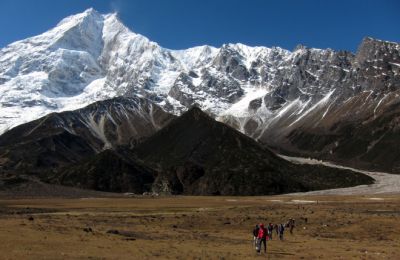
Manaslu Trek via Barpak and Laprak - 17 days
Manaslu Trek - 17 days is an off-beat trekking adventure with a fascinating cultural experience. Walk to the base of Manaslu, the eighth highest peak in the world.
Inquire Now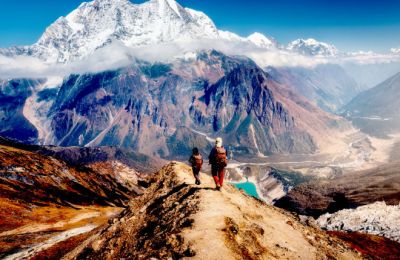
Short Manaslu Circuit Trek via Arughat - 14 days
Short Manaslu Circuit Trek via Arughat is best for those looking to witness all of the wonders the Manaslu region offers in the quickest way to complete Manaslu Circuit in 14 days.
Inquire NowWhere to travel next?
Get help from our travel specialists for holiday ideas that matches your interests.
Manaslu Trek Cost
Manaslu trek cost is relatively higher than other trekking destinations in Nepal as it is an off-beat trail in a remote and restricted area. The trek cannot be done solo/alone. Hiring a licensed Manaslu trek guide is mandatory. The guide will go along with you throughout the trek, which adds to the cost apart from the expensive permit cost. There are two distinct ways that you can go for the trek:
All-Inclusive Package
An all-inclusive Manaslu Trekking package offered by a travel agency ranges anywhere from USD 1000 to USD 3000. The Manaslu Circuit Trek cost also depends upon group number, the standard of the services offered in the package. It could be different in terms of transportation (land and air), accommodation and food standards, guide and porter facilities, and more. While choosing a travel agency, it is better to opt for local agencies because they are familiar with the culture of Nepal and the status of the trekking trails.
In general, the standard package offered by many travel agencies includes land travel, accommodation and meals during the trek, trek permits, guide and porter facilities with their insurance, accommodation, and food. The package cost is lower if you go in a group because the guide and porter costs can be divided. This package does not include any personal interest expenses like hot showers, extra porters, bar bills, snacks, internet, bottled water, travel insurance, etc.
Pay As You Go And Hire Guide And Porter
You can choose to hire a local guide and porter on your own instead of having a tour operator. Throughout the trek, you will manage the cost for your accommodation, food, transportation, permits, personal expenses, as well as the permit, transportation, insurance, accommodation, food, and tips of guide and porter. Hence, having a more extensive group means the cost is divided, and it is cheaper per person. Going with a large group means cost division, so a minimal budget will also be enough in such a case.
Hiring guide and porter alone will costs:
- Guide: USD 25 to USD 35/day + tips
- Porter: USD 15 to USD 25/day + tips
In this type of trek, you will manage the trek by yourself with the assistance of your guide and pay for the amenities you use as you go through the trek. However, the major downside to this is the hassle of organizing a trek in a remote and restricted area.
When hiring a guide, see if they are licensed, speak English, have prior experience of visiting the region, and know the area's culture. Also, the porter can only carry about 15 kg of weight.
How To Book Manaslu Trek?

Many travel agencies provide experienced service in the all-inclusive package. It is best to book an all-inclusive Manaslu Circuit Trek Nepal package with a travel agency based in Nepal. Local agencies are more experienced in managing restricted area treks in Nepal. Moreover, as this is a restricted area trek, you need to go with a group of at least 2 members and a licensed guide.
However, if you wish to travel individually without a group, you can reach out to some local agencies who might manage the trek for you and a guide to tag along. Despite you trekking the manaslu region individually, two permits are mandatory. While the travel agency can compromise the group number by acquiring a ghost permit, you cannot go without a guide.
While booking for the trek, to check on the reliability of a trekking operator, you need to consider many things, including transportation, accommodation and food standard, coverage of permits. Also, check whether the guide offered by them is licensed by the authoritative body, experienced, and can speak English if not your mother tongue. It is wise to book travel agencies like Third Rock Adventures with previous experience and comprehensive knowledge in organizing treks in the Manaslu region.
Manaslu Trek Permits

Manaslu Circuit Trekking falls within the Manaslu Conservation Area Project (MCAP) designated to protect the region; hence an MCAP permit is required for it. Similarly, the route also passes through the Annapurna Conservation Area Project (ACAP), so an ACAP permit is required. Furthermore, due to the remoteness and close border to Tibet, the Manaslu region has also been classified as a restricted area in Nepal, requiring a Restricted Area Permit to protect the land and the people.
Following are the necessary Manaslu Circuit Trek Permit per person for Non-Nepalese with its cost information:
Manaslu Conservation Area Permit (MCAP)
USD 30 for foreigners and USD 10 for SAARC Nationals
Annapurna Conservation Area Project Permit (ACAP)
USD 30 for foreigners and USD 10 for SAARC Nationals (approx.)
Manaslu Restricted Area Permit (RAP)
- September to November: USD 100 for the first 7 days, then USD 15 additional per day thereafter
- December to August: USD 75 for the first 7 days, then USD 10 additional per day thereafter
TIMS card is not required for this trek as the RAP permit covers all the trekker's information along with the route, emergency contact, and more.
You can get these permits from Nepal Tourism Board Office, located in Pradarshani Marg, Kathmandu, only 20 minutes away from Thamel. The office opens from Sunday to Saturday from 9:00 AM to 4:00 PM (NT). Carry all the essential documents required, including a copy of your passport, passport-sized photos, Travel Insurance policy number, information about your daily itinerary, and trekking route for the permit. If you are going with a guide or a travel agency package, the permit will be managed.
Manaslu trek permits are non-transferable, non-refundable, and valid only for a single entry. Children under 10 years of age do not require an entry fee. Also, ensure that you carry the permits at all time and show it at the respective checkpoints. The permit will be checked between Jagat and Dharapani.
How To Prepare For Manaslu Trek?
You need to be well prepared before you plan for Manaslu Trek. It would be best to consider the long walking hours, the number of days, weather, and terrain to get yourself ready for the trek. Following are the ways you can prepare for the trek:
- A month before the trek, you can engage in some exercise like jogging, swimming, and hiking to get physically prepared for successfully covering the harsh terrains at higher altitudes.
- It is also recommended that you go on other short hikes and treks to build your stamina.
- You could hire a porter to carry your heavy luggage so that you can walk easily without the burden of carrying a large backpack.
- If you are not hiring a porter, then carry only the essential items and leave unnecessary clothing in the Kathmandu hotel. Don't burden yourself with a heavy backpack which will be a pain to your shoulder.
- Carry essential medicine with you and also have some basic knowledge of first aid to be prepared.
- Take necessary acclimatization day as suggested in the itinerary to accommodate your body with the change in altitude.
- If needed, carry an AMS medication as a precaution in consultation with your physician.
- Carry enough water to keep yourself hydrated and snacks to give you some energy.
If you prepare yourself for the trek beforehand, you will enjoy the rewarding views.
Food During Trek
During the trekking trail, food in the region is decent but not on par with the variety and quality found in Kathmandu. In your initial days at the lower altitude, the cost for food is cheaper, and generally, you will find several varieties. However, as you trek onwards to a higher altitude, the cost gets higher and the dish variety shrinks due to the tough access.
In Kathmandu, there are many hotels and restaurants with a wide range of cuisine that you can try from. As you head on to the trekking trail, the tea houses along the way predominantly offer 'Dal Bhat'- the typical Nepali staple diet consisting of lentil soup, rice, and vegetable curry. As you head to Samdo and Dharamshala, you will witness a sharp rise in cost and also more traditional Tibetan dishes like Tibetan bread, buckwheat bread, dumplings, authentic drinks, and more, since they closely border Tibet. As far as possible, try not to eat meat products because refrigeration, storage is not available in the area.
Furthermore, to the Breakfast, Lunch, and Dinner options in the Tea Houses, you can also carry some snacks with you. Make sure to buy it from lower altitude shops due to the variety, low price, and availability.
Featured Trips
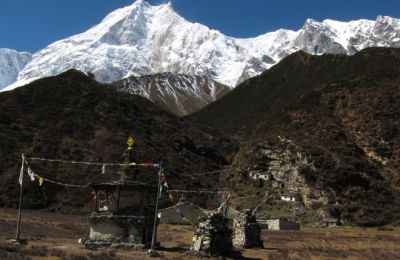
Manaslu Circuit and Nar Phu Valley Trek - 22 days
Nar Phu valley and Manaslu trek is a hidden gem that allows you to explore the unspoiled valley with unique culture and traditions. During the 22 days long Trek, you will witness the geographical diversity of Nepal.
Inquire Now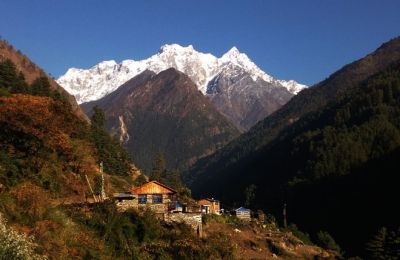
Manaslu Circuit with Tsum Valley Trek - 24 days
Manaslu Circuit with Tsum Valley trek in the off-beaten path of northwestern Nepal witnesses remote village lifestyle while circling the eighth highest mountain of the world. The 24 days long trek traverses to the beautiful Annapurna and Manaslu region to explore the rich wilderness and hidden valleys.
Inquire NowWhere to travel next?
Get help from our travel specialists for holiday ideas that matches your interests.
Accommodation During The Manaslu Trek

Manaslu Trek Nepal accommodation is based in tea houses. In comparison to the popular Annapurna and Everest region, the accommodation here is not so advanced. The region is developing in recent years, so new tea houses have also been built along with the trail. They offer only the very basic services with twin beds and minimal to no additional furniture. The rooms are not insulated and the beds come with a mattress, pillow, and blanket. To avoid cold and maintain hygiene, you can also opt to use your sleeping bag along with it. The price of the rooms gets higher in the higher elevation like Samdo. There are a communal dining and sitting area where food is served.
The shower area and toilet are also communal, mostly located outside the main building. Take your toilet paper roll and other toiletries because you cannot find them there. Chances of finding hot shower facilities in lower as you go to the higher altitude because the gas needs to be transported by mules and is used mostly for cooking and heating purposes.
Electricity Facility En Route
The electricity facility in the Manaslu trek is accessible but not so dependable. As most of the tea houses along the route use solar power panels, there might be power shortages during some days when there is minimal sun. Also, many houses will turn off the power during the day to save energy for the night. In the first few days of the trek, electricity is freely available, and you can charge your electronic gadgets without paying. However, as you proceed higher, the tea house owners usually charge you USD 1 or 2 an hour for charging your batteries.
As far as possible, it is advised to have a spare battery or two with you. If not, you can carry power banks and portable solar panels. Keeping your phone on battery saver and flight mode is another tip to save some battery power.
Internet Connectivity En Route

Internet Connectivity is available throughout the trekking trail, but at the higher altitude, it is not as fast and reliable as at the lower altitude. From Kathmandu to Jagat you will be facilitated with high-speed internet. However, as you progress to a higher altitude, the connectivity will get erratic and irregular. Some tea houses in Samagaun, Samdo, and Lho offer Wi-fi facilities, but they charge anywhere from USD 1 to 2 per hour for the usage. Due to the slow speed, it is best to minimize your use of the internet for a couple of days during the trek.
You can buy a local GSM-operated SIM card from Kathmandu or Barpak. Then you can even use the mobile internet (GPRS) by purchasing a data pack for 3G/4G coverage. However, in the higher altitude due to minimal to no reception, GPRS might not work as well. Hence, it is advised to connect with social media and your loved ones only in areas with high speed and accessible internet facilities.
Best Time to Trek Manaslu
Autumn and Spring are considered to be the best season for the Manaslu trek. This is due to the pleasant weather and clear mountain views throughout the trek.
Spring Season in Nepal lasts from March to May and is not just the best time for this trek but other treks all over Nepal. The temperature in Manaslu during this season ranges between 4 to 18 degrees Celsius. This is the time for flora and vegetation to bloom. Rhododendron forest along the way looks beautiful and the sky is clear, giving way to vivid mountain views. In particular, April is regarded to be the best time for Manaslu Circuit Trek.
During the Autumn season from September to November, the weather is neither hot nor too cold. On average, the temperatures range from 8 to 20 degrees Celsius. At nights in a higher altitude, the temperature may fall to -3 degrees Celsius.
The Winter season from December to February is the coldest, with temperatures ranging from -10 to 15 degrees Celsius. You have to be extra cautious of snowfall at an altitude over 4,000m/13,123ft. The end of February can be considered for the trek as it is a farewell to the winter season and the views of Manaslu mountain are clear. The Monsoon/Summer season is muddy and slippery due to downpours. There might be chances of landslides and floods hence best if avoided.
Manaslu Trek Difficulty

Manaslu trek is graded as a moderate to difficult trek. The Manaslu Trek difficulty depends on many factors, including the number of trekking days, maximum elevation, trekking season, climatic zones, and terrain. It is one of the more physically demanding trekking trails in Nepal that require you to be physically fit.
The trek lasts till 13 days where you will have to walk for an average of 5 to 6 hours. At a maximum, you might have to walk for 9 hours a day and at a minimum of 3 hours some days. Moreover, the Budhi Gandaki valley and Nubri Valley trails are challenging with winding paths with gravel roads and stone staircases. At times the frequent ascends and descends gets tiring. It takes you across six different climatic zones starting from sub-tropical then to tundra climate along with the 177km Manaslu circuit trek distance.
The minimum elevation is 970m/3,183ft at Khorla Besi in the initial phase of the trek. The maximum Manaslu altitude for this trek is 5,165m/16,929ft at Larkya La pass which can be difficult for those prone to altitude sickness. Furthermore, due to the remoteness of the trek, there aren't many tea houses along the way. So, finding a health post nearby is almost impossible if there is an emergency of any kind.
The trek is best for physically fit people above the age of 12. It is best to fit for young adults and adults who have been on other short treks in high elevations. However, it is worth noting that this trek is entirely doable if you are relatively fit and follow the itinerary well. It is better to make the trek in Spring and Autumn rather than Winter to avoid heavy snow in higher altitudes. Furthermore, since you cannot trek solo, there is always a guide assisting you in case of need.
Safety And AMS

Manaslu Trek takes you on a journey to an off-the-beat trial reaching a high altitude of over 5000m. Safety can be a concern as it is comparatively remote and less crowded than Annapurna and Everest region treks. The trekking trail passes through some tough rocky terrains. However, as it is classified as a restricted area, trekkers cannot travel solo. You need to have a licensed guide with you for the trek, which is good considering the safety and security factors. With a guide, you will not get lost on the trail, and in case of any mishap, you can seek assistance. It is not entirely a dangerous trek if you follow the basic regulations and designed itinerary.
Altitude sickness is common as the elevation crosses 3,000m/9,842ft. Due to the decreasing atmospheric pressure and oxygen level, your body cannot easily cope with the change with the increase in altitude. Altitude sickness is of three types, but the most common is Acute Mountain Sickness (AMS).
On average, there will be an elevation gain of 300m to 500m each day. The initial and final leg of the trail sees minimum altitude. However, in the middle of the 13 days Manaslu Circuit Trek, the elevation reaches a maximum altitude of 5165m, where AMS is common. You may experience mild symptoms such as headaches, fatigue, insomnia, and severe symptoms such as dizziness, vomiting, rapid heart rate, and fainting.
To avoid AMS, follow the itinerary, take appropriate acclimatization/rest day, drink plenty of fluids, and take smaller steps as you progress to a higher altitude. Also, you can consume Diamox or similar medication as a preventive measure against AMS in consultation with your physician. If you still happen to experience any of the symptoms, you can immediately consult with your trek guide, talk to your team members or tea house owner, who might help you.
Travel Insurance

Travel Insurance is very important if you travel to foreign countries or any high-risk area, particularly the Manaslu region. Manaslu is a restricted area and remote, which means limited vehicle accessibility and barely any health post in the trail. There might also be a risk of Altitude Sickness as the trek crosses more than 5000m altitudes. Due to such reasons, it might be tough to get prompt treatment in case of any unfortunate incidents or illnesses.
Hence for these unforeseen incidents, it is always wiser to be insured. While selecting a travel insurance company and policy, make sure that there aren't any exclusions or special conditions for trekking in Nepal. There might be a need for Search, Rescue, and Medical Evacuation, so make sure that it is covered. Ensure that the insurance covers high altitude treks up to 5,000m/16,404ft and has a cancellation policy.
While getting insured, you might need to provide your day-to-day itinerary, maximum altitude, trekking region, emergency contact details, and other such information to the company. You could refer to the service of World Nomad and True Traveller that are popular and experienced in the insurance coverage of trekking and adventure activities in Nepal.
Trekking Gear For Manaslu Trek

The packing list for this trek is similar to that in most of the other treks in Nepal. The only difference is the number of clothing you will have to carry because it is a long trek.
Follow the below packing list for the trek:
- Rucksack or duffle bag (will be carried by porter if hired)
- Daycare bag (30L, for you to carry your necessary daily items if you hire a porter)
- Backpack (40L-70L, for yourself if you are not hiring a porter)
- Light and quick-drying T-shirt and trekking pants (day wear)
- Warm Clothes (Base, Mid and Insulating layers for Head, Hands, Upper Body, Lower Body, required for higher altitude)
- Down Jacket (can be worn during the evening and night at higher altitude)
- Strong hiking boots and flipflop
- Headlamp (useful during a power outage)
- Toiletries and personal hygiene products
- Sunglasses and Sun Hat/Cap
- Medication and first aid
- Entertainment Items (novels, iPod, playing cards, etc.)
- Smartphone, personal gadgets
- Sturdy Trekking pole/ stick
You can check out the Packing List for Trekking in Nepal blog for more details. This is a tea house trek, so there isn't a necessity for camping gear but a sleeping bag can be carried to keep yourself warm during the night. Make sure to carry only the necessary gears with you when you travel on long treks. You can buy or hire some heavy clothing in the Trekking rental shops in Thamel, Kathmandu. Also, double-check the packing list in Kathmandu to ensure that you have not missed out on anything important.
ATM Facility And Withdraw Money

ATM facilities can be found from Kathmandu up to Barpak. From there on until Dharapani, the trek's final leg, you won't find ATMs in the Manaslu trail. Due to the remoteness, there hasn't been much advancement in terms of road and infrastructure construction. It is wiser to be fully prepared and carry cash in these areas, particularly Nepali Rupees (NPR) because money exchange is also not found there. Tea house owners and locals will only accept NPR.
The best way is to withdraw Nepalese Rupees in Kathmandu and carry it throughout the trek, rather than relying on ATMs and foreign exchange along the rural trekking trail.
Tips For Beginners

It is best to be well aware of the trekking region and tips to consider before heading on a trek in rural areas of Nepal. If you are a beginner, you need to know the basics of Nepal's culture, lifestyle, and trekking practices. Below are some of the recommended tips for beginners or read our Manaslu Trek complete guide which could also be beneficial for regular trekkers to make the trek a successful one:
1. Stay hydrated
As this is a trek with long trekking hours, you could easily get dehydrated in the cold temperature. Drink at least 2 to 4 liters of water each day. Buying bottled water from shops is costlier, particularly in a higher altitude. Water is found freely on open taps and springs but can be contaminated. Hence, carry your own reusable water bottle (thermos if possible) with a filter or purification tablet for filtering water to stay hydrated and save money.
2. Carry Snacks
Buy light snacks such as dried fruits, cookies, energy bars from Kathmandu , Barpak, or Arughat (if you choose Short Manaslu Circuit Trek via Arughat) which will give good stamina and energy along the long uphill trek. You might not find a variety of these snacks at a higher altitude, and if you do, it is two folds costlier.
3. Give way to animals
The very basics of trekking in Nepal are giving way to the mules, yaks, and donkeys carrying heavy load essentials. They won't do you any harm if you leave the way in the narrow trail.
4. Carry Nepali Cash all the way
As ATMs and foreign exchange are not found along the rural trail at higher altitudes, it is wise to withdraw Nepali Rupees from Kathmandu and carry it along the way. Also, make sure to carry additional cash so that you do not fall short in case of contingency.
5. Eat a balanced diet throughout the trek
Avoid smoking, drinking alcohol, and eating meat throughout the trek, to keep yourself healthy, maintain your stamina and prevent altitude sickness. It is best to eat fresh local produce than canned goods to avoid indigestion issues.
6. Carry your own sanitary products
Understand that the bathrooms/toilets in the trekking trail are not always clean and comfortable. Always carry paper soap, sanitizer, and tissue paper along with you because toilets in the tea houses do not provide such necessities.
7. Start your day early
In the Himalayan region, the views and the freshness during the morning hours are best. Start your trek early to get the views of Mt. Manaslu and other adjoining mountains in the refreshing morning air. This also allows you to reach your next destination on time before dusk.
8. Respect the Culture and Nature
Always respect the tradition, religion, culture of the ethnic communities along the trek and avoid making any unwelcomed remarks/comments. If possible, do a little research about the local communities before the trek. Also, practice responsible traveling by conserving and respecting the culture and nature, which will be highly appreciated. Dispose of the garbage only at designated bins.
9. Consult with your guide in case of health issues
As altitude sickness is common in higher elevations, it is best if you are open about your ongoing health-related symptoms and status with your guide. You might witness a slight fever and headaches along the way, which is common. However, if the symptoms prolong and progress, it is best to let your guide know.
10. Tipping the Porter and Guide
The porters and guides ensure that you have the best time during the trek without any hassle. Hence, it is nice to give them a little tip at the end of the trip to thank them for their service. Although the tip is not mandatory, it is expected and appreciated.
Conclusion
The Manaslu Trek is a unique experience in the rural setting of Nepal, tucked away peacefully in the west, offering a wide range of terrains and climates. Our experienced professionals have prepared a complete guide with all the essential information to consider before taking this trek to keep the interested trekkers informed.
Do you find this exciting? Are you planning your Manaslu Trek? Consult with our team of professionals at Third Rock Adventures and board on a flight to Nepal for the trek of a lifetime, and we will take care of the rest for you. Furthermore, you can also reach out to us if you wish to take a detour to the Manaslu Base Camp, Tsum Valley, or Nar Phu Valley in combination with the circuit trek.
- Written by: Naba Raj Amgai
Updated: May, 5, 2021

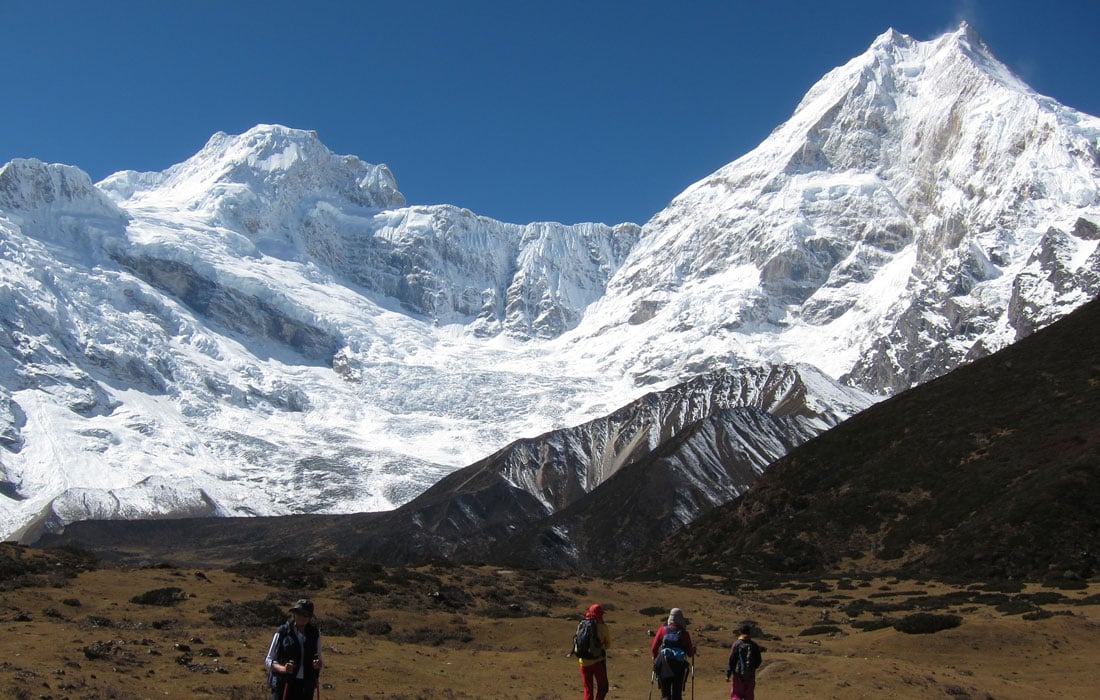

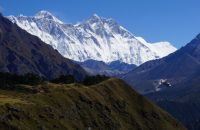
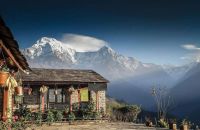
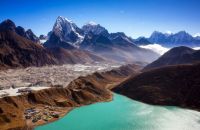
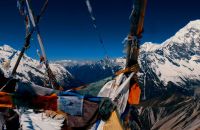
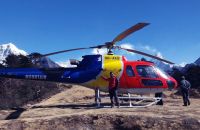
















Recent Comments